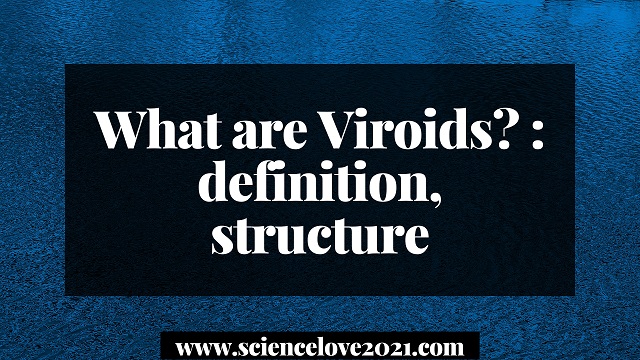Virods are extremely simple infectious agents discovered by T.O. and W.B. Raymer (1967). These are smallest known infectious agents of plant diseases. Diener and Raymer discovered the potato spindle tuber viroide (PSTV) is potato disease. This disease by free RNA (no protein). Diener give the termed it viroid. Viroids cause chrysanthemum stunt, chrysanthemum chlorotic motile, hope stunt, tomato planta macho, cadang of coconut citrus exocortis disease (caused by exocortisa virus) and cucumber pale fruit. These viroids (RNA molecules) contain sufficient informations required to direct their own replication. But they totally depend upon host's metabolic machinery. Viroids consist of only single stranded RNA (No protein coat).
Structure of viroids
A viroid consists of a very short strand of RNA without any protective coat. Electron microscopic studies of purified 'potato spindle tuber viroid' (PSTV)' revealed that it has a single stranded RNA molecule containing 250-350 nucleotides. The adenine : uracil (A : U = 21.7 : 20.9) and guanine: cytosine (G : C = 28.9 : 28.3) ratios are close to unity. Viroids do not possess capsid (protein coat) around the RNA molecule. some circular molecules of PSTV have also been reported. The RNA fingerprinting has shown that the circular and linear molecules of PSTV structures are probably not two distinct RNA species. The two structures more likely represent two stages of maturity of PSTV. The molecular weight of viroids is in the range of 115,000 - 130,000 daltons.
Although the precise mechanism of viroid replication is not known as yet, the following two hypothesis have been put forward.
- RNA-directed replication - According to this view in uninfected plants there exists a replicase enzyme which accepts a wide variety of RNA species as templates. The presence of RNA-directed RNA polymerase has been shown in healthy plants of chinese cabbage and tobacco.
- DNA-directed replication - This hypothesis suggests that viroids may be replicated on DNA templates which are already present in pressed form in uninfected hosts or are synthesized as a result of viroid infection.



No comments:
Post a Comment